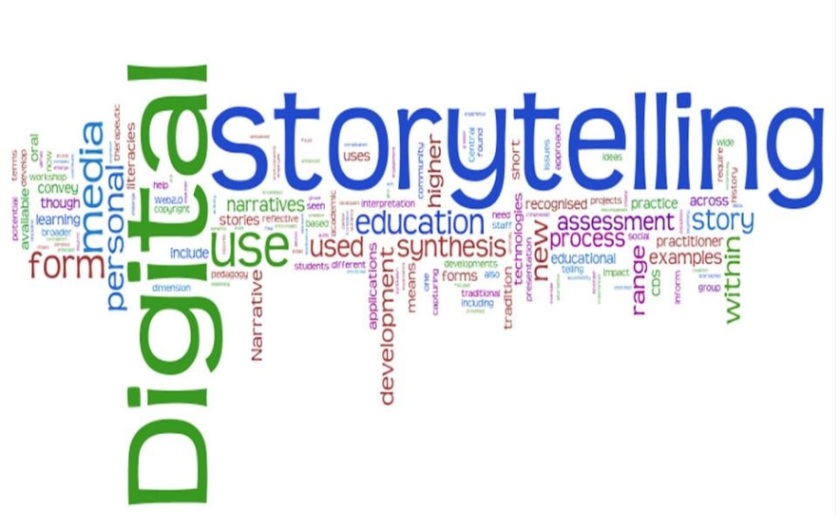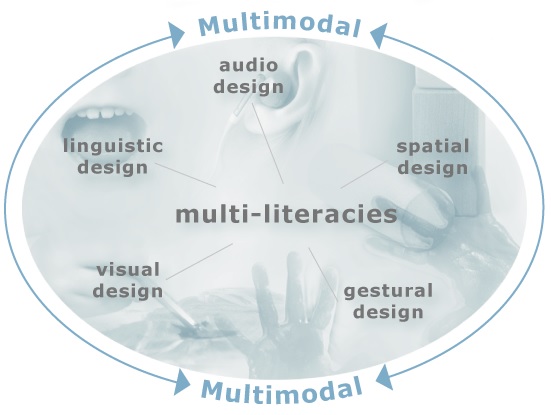The definition of literacy will always seem to rewrite itself, until you can find a broad enough statement that will hold truth for what it meant in the past, what it means in the present, and what it will mean in the future. Without a greater understanding of literacy, it is common to view it as the ability to read and write. You can think about “literature” and “literacy” being the same thing, and in a way you wouldn’t be wrong, but that would be like saying humans are the only living life form on Earth. There are many other contexts to examine within the term “literacy” and that is why it is so confusing for many, as it was expressed in the Dousay article Reinforcing Multiliteracies Through Design Activities.
Both the Dousay and Cope/Kalantzis articles shared their information on multiliteracies, which extends to the approach of literacy and pedagogy. Not only does literacy refer to linguistics but it also takes on multimodal forms such as multimedia and technology. As a future educator, it is important to know about these terms and the strategies on how to implement learning practices to embrace multiliteracies. This can be tied into the Kliewer chapter about Isaac, the boy with Down syndrome and his first day of class. Using the medical approach he was seen as disabled and was told he would have to stay in self-contained classrooms because of his disability. But the parents fought for more because they saw how capable Isaac was and with the right implementations from Ms. Robbins, grabbed onto what made Isaac participate in the classroom. This reminded me of the article about the boy Christopher from last week because both individuals had to overcome their labels as being disabled, but with the right focus on what context could provide them with the environment they’re comfortable and can contribute in, they weren’t acting like how the doctors diagnosed them. They were actively involved in the classroom and out-of-classroom activities and was included in the learning process.

But in addition to all of the discussion on multiliteracies and the old capitalism of school and changing the structures to fit the emerging students and the advanced technology, I must admit that I was completely awestruck by the digital story-telling from two of the suggested sites from the article “10 Mind-Blowing Interactive Stories.” These included The Boat and After the Storm. It was one thing reading about how effective digital story-telling could be from the Dousay article, but it’s another beast to experience the impact and the degree of expertise put into these projects. There is no doubt how effective digital story-telling can be when used in a classroom. It will definitely actively involve students in the learning process and it certainly provides an interesting outlet of information. I loved the comic-book style of The Boat, with its sound effects and creativeness flowing from every stroke of my touchpad. And After the Storm was just a brilliant form of story-telling. I loved how interactive each frame was, from photos to videos to the voice-over narration to the interactive illustrations moving from scrolling. I can’t believe I haven’t been introduced to this sooner.

Digital stories is definitely a way to use multiliteracies in the classroom and to show students how there are other forms of story-telling outside of the written language or the traditional approaches using video and audio. Collaborating all of the elements truly taps into all of our senses as we engage in digital stories. Though I’m not exactly sure quite yet how to present and use this in the classroom, introducing students to digital story-telling and having them participate in making their own projects would be an excellent way to embrace multiliteracies. This is why we’re spending the majority of this class online. It’s why we’re not writing in journals and handing them in every week, but instead creating multimodal blogs. And as the articles stated, technology is moving forward at a brisk pace, so for everything we’re learning about multiliteracies today will likely evolve into something more in the near future. We just have to make an attempt to keep up to provide our students every opportunity to display their knowledge.
—
I just want to leave this post with a short 3-minute video by the New London Group talking about the pedagogy of multiliteracies (from 1996). Enjoy!


Hi Rob!
Your metaphor about literature and literacy being the same as humans being the only form of life on Earth was captivating. I also value learning about all of these multiliteracy strategies so that they can be incorporated into my future classroom. All of the strategies learned thus far, as well as weekly blogging, has really created a foundation for me in reference to multimodal and mulitliteracy strategies. After exploring the digital story telling sites, I was pleasantly surprised by how engaging they are and could foresee students loving them as well. I can also imagine students being eager to create their own digital story as some sort of final presentation, digital story telling could easily be interdisciplinary. Nice blogging! 🙂
–
Samantha
LikeLiked by 1 person
Rob,
I totally agree with you when you say that there is not a broad enough statement to describe what literacy is. I think this is a similar concept to the term disability as well. We, as a society, define disability as something that is very black and white and something that needs to be corrected, similar to the way that we define literacy as being about to read and write. I think that through knowledge of both of these, these social definitions can be altered. I like how you connected the use of digital story telling to the fact that we have to write blog posts every week. It is a different form of expression than simply handwriting a response. This allows us to express our thoughts and understandings in a variety of ways, and showcase them to the class. By reading your blog, I get a different perspective on the readings than I found, which is really interesting to me. Great blog post!
-Lauren
LikeLiked by 1 person